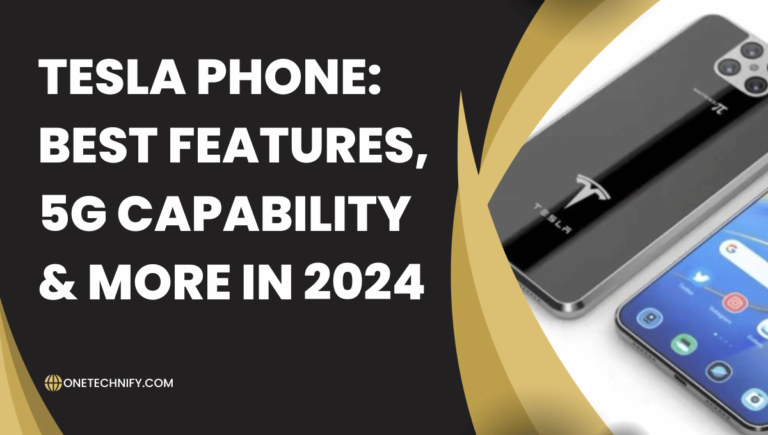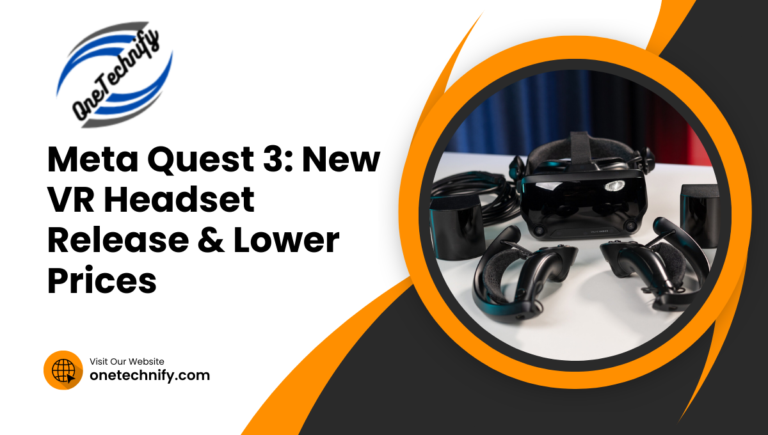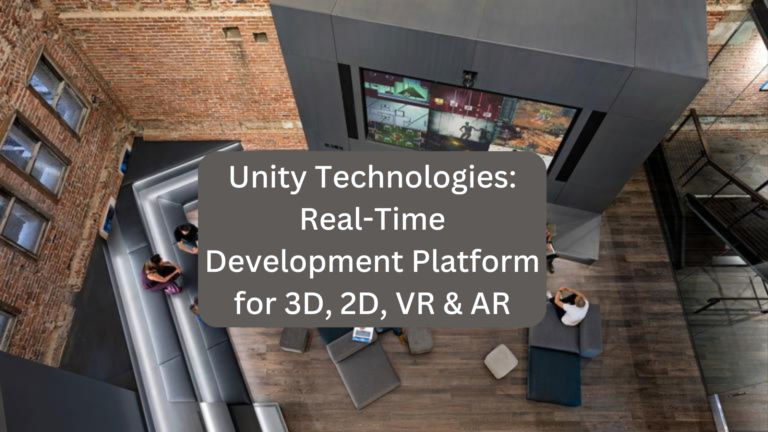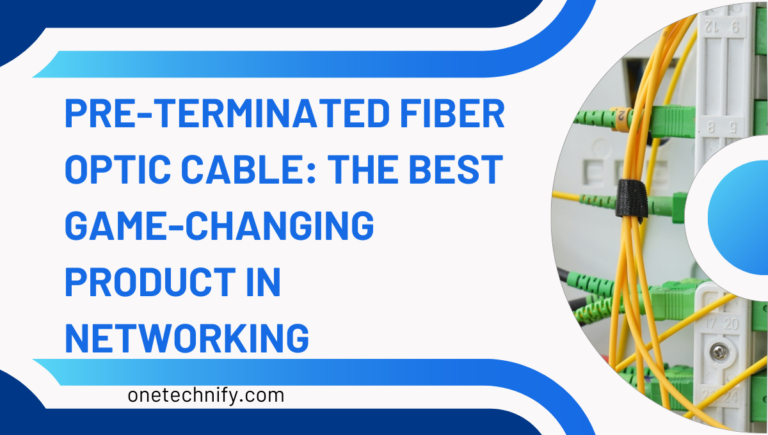Is metaverse the Next Internet, an immersive space brimming with new opportunities and endless potential, poised to become the next internet sensation? Imagine a virtual reality realm where people connect, socialize, and engage with digital experiences in online spaces. This cool idea will change the gaming, entertainment, and communication industries by harnessing the power of emerging technologies and mirror worlds found in video games.
Major players like Facebook are making substantial investments in metaverse development, recognizing its power to reshape our online interactions in extended reality. With its boundless scope for creativity and innovation, the metaverse offers a gateway to uncharted territories in virtual space. It’s no wonder that author Neal Stephenson once described it as a guide to an entirely new world of social media and social spaces.
As research capital pours into the emerging landscape of extended reality, we find ourselves on the cusp of a paradigm shift. The metaverse promises a future where imagination knows no bounds in virtual space, opening doors to experiences yet unimagined in mixed reality mirror worlds.
So, buckle up as we embark on this thrilling journey through the uncharted terrain of extended reality, digital experiences, mixed reality, and web3 in the metaverse!
Is the Metaverse the Next Internet?
The metaverse is like the internet because it can connect a lot of people. It goes beyond the internet by creating immersive experiences through 3D virtual reality. In the metaverse, users can dive into digital realms and interact with others in a more engaging way, revolutionizing the media landscape.
While similar in some aspects, the metaverse introduces new concepts like digital ownership and virtual economies in the extended reality (XR) space. Unlike the internet, where information can be freely accessed, the metaverse allows individuals to own unique digital assets and trade them within virtual communities. This opens up possibilities for new forms of commerce and creativity in the mixed reality (MR) world.
The metaverse, an extended reality concept, has the potential to reshape how we connect, collaborate, and consume information online. It offers a more interactive and dynamic environment compared to traditional web browsing. Instead of simply reading or watching content, users can actively participate in virtual worlds, attending events, playing games, or exploring new places. This immersive experience is made possible through the use of mixed reality technology and 3D networks.
With advancements in Web3 and blockchain technology, the metaverse will likely become even more decentralized and secure. Blockchain technology enables trustless transactions and verifiable ownership of digital assets within the metaverse, making it ideal for extended reality and mixed reality experiences. This ensures that participants have control over their data and assets without relying on centralized authorities, creating a network-driven metaverse.
Understanding the Metaverse: Key Concepts and Definitions
The term “metaverse” was created by Neal Stephenson in his book “Snow Crash.” It refers to a future where real and virtual things come together in networks, web3, and XR.
In simple terms, the metaverse is a fully immersive digital world where people can interact with each other and their surroundings. It is built on web3 networks, providing a seamless blend between real and virtual worlds. This new digital infrastructure allows for enhanced identity and connectivity within the metaverse.
Virtual reality (VR), augmented reality (AR), and mixed reality (MR) technologies play a crucial role in building the metaverse. These technologies enable users to experience immersive environments, interact with digital objects, and engage with others in real-time using web3 networks and xr infrastructure.
Understanding the concept of the metaverse involves grasping its fundamental elements, including networks, web3, the real world, and identity.
- Virtual Shared Space: The metaverse provides a shared environment accessible to multiple users simultaneously. It allows people from different locations to connect, communicate, and collaborate within this digital realm.
- Immersive Experience: Users can dive into richly detailed virtual worlds through VR headsets or AR devices. This immersion enhances their sensory perception, making them feel present within the metaverse.
- Social Interaction: The metaverse fosters social connections as individuals can interact with one another through avatars, or digital representations of themselves. They can chat, participate in activities together, or even attend virtual events.
- Persistent Environment: Unlike traditional online platforms that reset upon logging out, the metaverse maintains continuity over time. Changes made by one user persist for others to see, creating an evolving landscape.
- Economic Opportunities: The metaverse presents various economic possibilities, such as virtual marketplaces where users can buy/sell goods or services using digital currencies. This opens up new avenues for entrepreneurship and creative expression.
As technology continues to advance rapidly, exploring the potential of the web3 network and XR becomes increasingly important. By understanding these key concepts, we can appreciate the transformative power and possibilities that lie within this emerging digital frontier. Web3 and XR services play a crucial role in shaping the future of the metaverse.
Preparing Businesses for the Metaverse: Essential Strategies
Businesses need to adapt their strategies to embrace the opportunities presented by the metaverse. With the rise of virtual reality (VR) and augmented reality (AR), companies have a chance to create immersive experiences for their customers. Investing in VR/AR technologies can help businesses stay ahead in the digital economy and stand out from competitors. By leveraging these services, businesses can enhance their network and tap into the potential of XR, which is crucial for success in the web3 era.
To succeed in the metaverse, it is crucial for business leaders to build partnerships with tech companies specializing in metaverse development. These partnerships can provide access to cutting-edge technologies such as web3 and xr, as well as expertise in network and fiber. These resources will give companies a competitive advantage, allowing them to explore new ways to integrate their products and services into virtual environments.
To engage users in the metaverse, businesses need to create special content for virtual environments. They should think creatively about how to interest people, using not just visuals but also sound, touch, and other senses. It’s also important to collect data in the metaverse to understand customers better. This information can help improve marketing, products, and the overall customer experience. By investing in VR/AR services, partnering with metaverse developers, making unique content for the web3 network, and collecting data, businesses can be leaders in this new digital world. The metaverse has lots of potential in XR, so companies should embrace it now.
Portability and Interoperability in the Metaverse
Portability and interoperability are crucial aspects of the metaverse that ensure a seamless user experience. With the network, users can effortlessly move between different platforms within the metaverse without losing their progress or data. This means that whether they are using web3 services on mobile devices, such as smartphones or tablets, or accessing virtual worlds through computers or gaming consoles, their presence and achievements remain intact. XR technology enhances the immersive experience in the metaverse, making it even more engaging for users.
Interoperability in the web3 era means that different virtual worlds and apps, leveraging technologies such as XR and 5G, can seamlessly communicate with each other. This fosters collaboration among users, even if they are on different platforms. To facilitate this, the Open Metaverse Interoperability Group has established rules that enable smooth integration between various networks and systems. These rules also enhance user experience by simplifying the utilization of services across different platforms. Ultimately, this promotes innovation for developers and facilitates transactions for buyers and sellers in the digital ecosystem.
The Power of Immersive Environments in the Metaverse
Immersive experiences in the web3 metaverse offer users an unparalleled sense of presence and engagement. By leveraging xr devices, haptic feedback, and spatial audio, these environments transport individuals to digital realms that feel remarkably real. With the rise of web3 network, these immersive experiences are becoming more accessible, allowing users to enjoy a wide range of services.
Virtual experiences can transform many industries, including education and healthcare. In the education sector, students can embark on virtual trips and engage in hands-on learning experiences. Meanwhile, healthcare professionals can enhance their skills by practicing in realistic simulations. Industries such as aviation and manufacturing can also leverage virtual simulations to train their employees effectively. Moreover, businesses are utilizing virtual worlds to connect with customers and offer innovative experiences. By combining the real world with digital technologies like AR, XR, and MR, the metaverse is revolutionizing the way people interact with networks, services, and web3.
Second Life and its Role in Virtual Worlds
Second Life is an early example of a virtual world within the metaverse. Launched in 2003, it offers users the ability to create avatars, interact with others, and build virtual content. This online space has been utilized for various purposes, including socializing, commerce, education, and even virtual conferences. With its robust network and services, Second Life provides a immersive XR experience that is supported by a high-speed fiber connection.
Second Life is still important for studying virtual worlds and metaverse experiences. People can do real-life things in this web3 metaverse. They can be different people and make friends from all over the world. They can also buy and sell things in the game, exploring metaverse technologies. Second Life is not just for fun, it can also be used for education, providing immersive metaverse experiences. Teachers can use it to teach students in an interesting way, leveraging the term metaverse. It can also be used for virtual conferences, showcasing the potential of metaverse technologies. Even though there are newer games now, Second Life was the first to mix real life with digital worlds and explore the possibilities of the metaverse.
Identity and Governance in the Metaverse
Identity management is crucial within the metaverse to ensure security and privacy for users. In this digital realm, where individuals interact, create, and own assets, establishing a reliable system for user identity becomes paramount. Decentralized identity systems using blockchain technology offer solutions for secure digital identities across platforms. These systems leverage the immutability and transparency of blockchain to verify and authenticate user information without relying on centralized authorities. With the rise of networked services and XR technologies, the need for robust identity management is more important than ever. By incorporating fiber optic connections, these systems can provide fast and reliable communication between users, ensuring seamless access to their digital identities.
Governance models need to be established to address various issues within the metaverse network. Content moderation is one such concern, as ensuring appropriate standards of behavior and preventing harmful content on the network will be essential. Intellectual property rights also come into play, with the need to protect creators’ work from unauthorized use or plagiarism on the network. User safety must be prioritized on the network, with measures in place to prevent harassment or exploitation.
Balancing individual freedom with responsible governance will be essential for creating a thriving metaverse network. While users should have the freedom to express themselves and explore their creativity within the network, certain limitations may need to be imposed to maintain order and protect the community as a whole. This delicate balance will require collaboration between organizations, leaders, and individual creators in the network.
Decoding the Nature and Significance of the Metaverse
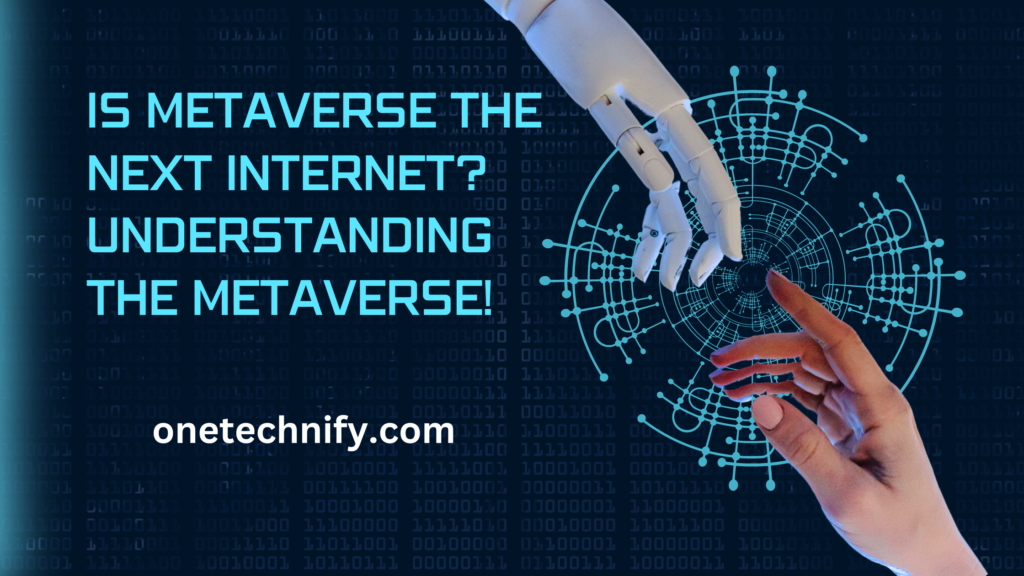
The concept of the metaverse, a networked virtual reality space, has been generating a lot of buzz lately. But what exactly is it, and why is it being hailed as the next internet? Let’s delve into its nature and significance to understand this phenomenon better.
Meta Quest: Exploring a New Digital Realm
At its core, the metaverse is an immersive virtual universe where users can interact with each other and experience an array of digital content within a vast network. It goes beyond traditional online platforms by offering a seamless blend of real and virtual worlds. Think of it as a massive sandbox where people can create, explore, and engage in various activities within this interconnected network.
The Metaverse: A Paradigm Shift in Connectivity
The metaverse represents a paradigm shift in network connectivity. It transcends geographical boundaries, allowing individuals from all corners of the globe to come together in a shared virtual space. This newfound level of interconnectedness opens up endless possibilities for collaboration, communication, and socialization within the network.
Content Creation: Fueling Metaverse Growth
One key aspect driving the growth of the metaverse is user-generated content. In this digital realm, individuals have the power to shape their own experiences by creating unique content for others to enjoy within the network. From designing virtual landscapes to developing interactive games or hosting virtual events, there are countless opportunities for creativity within this ever-expanding metaverse.
As we witness advancements in technology like augmented reality (AR) and virtual reality (VR), the potential for immersive experiences within the metaverse network continues to grow exponentially. With companies investing heavily in building their presence within this digital realm, it’s clear that the metaverse holds immense promise for shaping our future online interactions.
So, is the metaverse truly poised to become the next internet network? Only time will tell. However, with its ability to foster connection on a global scale and provide unparalleled opportunities for user engagement through content creation, it certainly seems like we’re on the cusp of a digital revolution in the network.
Risks and Uncertainties in the Metaverse
The metaverse, as the potential successor to the internet, has gained significant attention in the network. However, it is not without its risks and uncertainties. As this virtual world continues to develop, several challenges and concerns arise that need to be addressed for a secure and successful metaverse on the network.
Security One of the primary concerns in the metaverse is security. With users interacting within a digital realm, there are inherent risks of cyberattacks, data breaches, and identity theft. Ensuring robust security measures will be crucial to protect users’ personal information and assets.
Asset Protection As individuals invest time and resources into building their presence in the metaverse, safeguarding their virtual assets becomes paramount. Whether it’s virtual currencies, digital collectibles, or other valuable items, mechanisms must be in place to prevent theft or unauthorized access.
Privacy In a world where users spend significant amounts of time online, privacy becomes a pressing issue. The metaverse should prioritize user privacy by implementing strict data protection policies and allowing individuals control over their personal information.
Regulatory Challenges The emergence of the metaverse raises regulatory challenges that need careful consideration. Determining jurisdictional boundaries, intellectual property rights enforcement, taxation frameworks, and ensuring fair competition are just some of the complex issues that regulators will face.
User Experience To achieve mass adoption, the user experience within the metaverse needs to be seamless and intuitive. Overcoming technical hurdles such as latency issues or connectivity problems will be essential for users to fully immerse themselves in this virtual environment.
Economic Disparities The creation of a thriving metaverse may exacerbate existing economic disparities if access is limited only to those with financial means. Addressing these inequalities by providing affordable access options can help ensure inclusivity within this digital landscape.
Navigating these risks and uncertainties will require collaboration between technology developers, policymakers, businesses, and users themselves. By addressing these challenges head-on, the metaverse can evolve into a secure and accessible space for individuals to explore, connect, and create.
The Future Impact of the Metaverse in 2040
The metaverse, often hailed as the next generation of the internet, is set to have a profound impact on society in the coming decade. According to a study by Pew Research Center, its influence will be far-reaching and transformative. Let’s explore how this future landscape might shape our lives:
- Future Possibilities: The metaverse holds immense potential for creating new opportunities and experiences. It could revolutionize industries such as entertainment, education, healthcare, and commerce. Imagine attending virtual concerts or exploring immersive educational simulations from anywhere in the world.
- Next Generation Connectivity: With advancements in technology, we can expect seamless connectivity within the metaverse. High-speed networks and 5G infrastructure will enable real-time interactions and enhance user experiences. This interconnectedness will bridge geographical barriers and foster global collaboration.
- Impact on Social Interactions: As people increasingly inhabit virtual spaces, social dynamics will undergo significant changes. Virtual communities may become more prevalent, offering individuals an alternative platform for communication and connection. Friendships forged within the metaverse may hold equal importance to those formed offline.
- Economic Opportunities: The metaverse has tremendous economic potential. It could create new job markets centered around digital content creation, virtual asset trading, and platform development. Entrepreneurs can tap into this burgeoning industry by providing innovative products and services tailored to this virtual realm.
- Challenges Ahead: While the metaverse promises exciting prospects, it also poses challenges that need addressing to ensure a safe and inclusive environment for all users. Issues like privacy concerns, cybersecurity threats, digital inequality, and ethical considerations must be tackled proactively.
Conclusion
In evaluating the evolution of the Metaverse, it becomes evident that it holds immense potential to become the next internet. With its immersive environments, portability and interoperability features, and power to redefine identity and governance, the Metaverse offers a unique and transformative digital experience.
Businesses need to prepare for this shift by adopting essential strategies that align with the Metaverse’s requirements. Embracing its portability and interoperability will enable seamless integration across platforms, opening up new opportunities for growth and collaboration.
Immersive environments are super important in the Metaverse. They make things more fun and let people do new things. This can change gaming, entertainment, education, and work. Second Life is an example of how virtual worlds can be important. It shows how people can socialize, buy things, and be creative in a virtual place.
But there are also risks with this technology. We need to think about privacy, security, and being fair to everyone. In 2040, the Metaverse will have a big impact. It can change whole industries and give us new ways to talk, have fun, and learn. In conclusion, as we navigate through this digital revolution powered by the Metaverse concept—immersing ourselves in its possibilities—we must embrace change proactively. By understanding its key concepts and preparing our businesses accordingly, we can harness its full potential for a brighter future.
FAQs
Q: How will businesses benefit from embracing the Metaverse?
Businesses that embrace the Metaverse stand to benefit from enhanced customer engagement through immersive experiences. They can tap into new revenue streams by creating virtual products or services within these digital realms.
Q: What are some privacy concerns associated with the Metaverse?
Privacy concerns in the Metaverse revolve around issues such as data security, personal information protection, and potential surveillance. It is crucial for individuals and organizations to prioritize privacy measures to ensure a safe digital environment.
Q: Can the Metaverse be accessed through multiple devices?
Yes, the Metaverse aims to be accessible across various devices, including smartphones, computers, virtual reality headsets, and augmented reality glasses. This portability allows users to engage with the Metaverse seamlessly, regardless of their preferred device.
Q: How can the Metaverse impact remote work?
The Metaverse has the potential to revolutionize remote work by creating virtual office spaces where teams can collaborate in real-time. This immersive environment can enhance communication and productivity while providing a sense of presence, even when physically separated.
Q: Will the Metaverse replace physical interactions?
While the Metaverse offers exciting opportunities for digital interactions, it is unlikely to completely replace physical interactions. Instead, it will complement our offline experiences by providing new avenues for connection and exploration.

